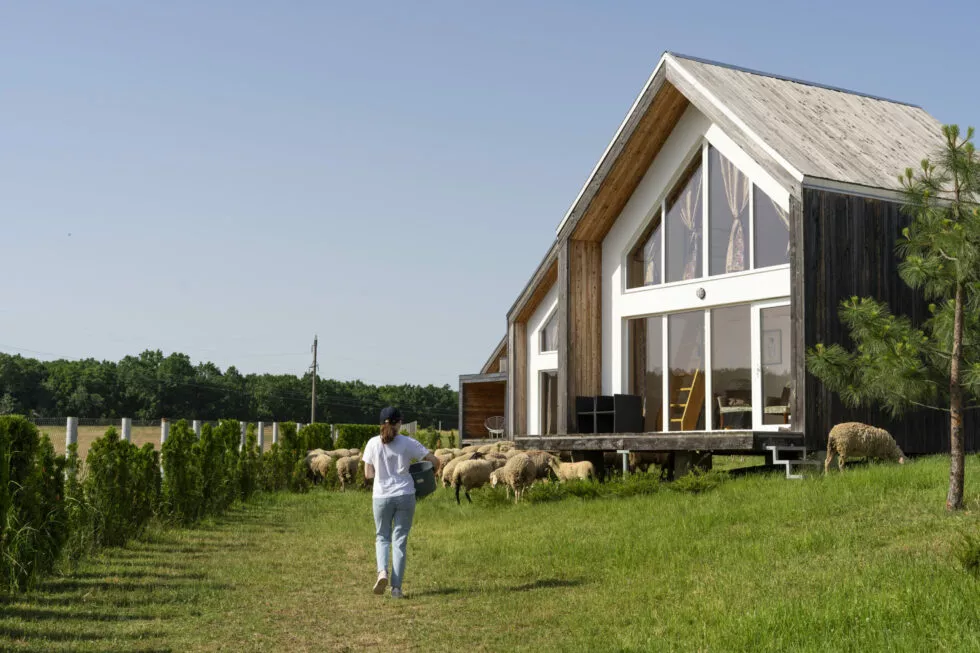Who should I call if I want to install an individual sanitation system?

When it comes to managing wastewater responsibly and efficiently, individual sanitation is the only solution for houses that are not connected to the mains drainage system. Choosing the right system and the right professional to implement your individual sanitation project is important to ensure the proper functioning and sustainability of your installation. In this article, we will discuss the steps to take to choose the right contact person and get your individual sanitation project off to a good start.
Understanding individual sanitation
Individual sanitation, also known as autonomous or non-collective sanitation (NCS), is a system designed to treat domestic wastewater on site. This includes black water (from toilets) and grey water (from kitchens, bathrooms, etc.). The aim is to make this water clean enough to be discharged into the natural environment without risk to the environment.
Commonly used systems include:
- All-water septic tanks with sand filters or dispersal beds
- Micro-treatment plants
- Planted filters, also known as Sanitation Gardens
Why use a professional?
Installing an individual sanitation system is not a task to be taken lightly. The environmental and health impacts are significant, and mistakes can be costly to correct. Here’s why it’s essential to call in a professional:
- Legal compliance: installations must comply with current standards
- Technical expertise: Professionals have the know-how to design a system tailored to your site and your specific needs.
- Safety: a poor installation can lead to leaks, unpleasant odours or even the contamination of groundwater.
- Cost optimisation: although calling on a professional represents an initial cost, it guarantees an efficient and low-maintenance system in the long term.
The various parties involved in a sanitation project
The design office
The design office is an essential component of any individual sanitation project. It is involved from the earliest stages of the project to carry out a sector study. This study is fundamental because it allows us to determine the most suitable sanitation solution according to the specific characteristics of your land. The parameters taken into account include topography, soil permeability, proximity to waterways and other environmental factors that may influence the choice of system.
Aquatiris is a company specialising in non-collective sanitation that can carry out the soil study and support you throughout your sanitation project. Their expertise ensures that your project is carried out according to best practices and in compliance with current standards.
The installer or public works company
The installer is responsible for the practical implementation of your project. They carry out the work necessary for the installation of the sanitation system. Aquatiris is also able to assist you from A to Z, i.e. from the soil study to the completion of the work, avoiding the need to call on multiple contractors.
Regular maintenance
Regular maintenance of non-collective sanitation systems is important for several reasons. Above all, it prevents breakdowns by detecting potential problems before they turn into costly repairs. In addition, a well-maintained system protects the environment by preventing leaks of untreated wastewater that could contaminate the soil and water tables. To guarantee long-term efficiency, maintenance extends the lifespan of the installation and maintains its proper functioning. The key elements of this maintenance include the regular emptying of all-water septic tanks, generally every 3 to 4 years to avoid the accumulation of sludge, and micro-treatment plants, which require emptying according to the manufacturer’s recommendations. For the Sanitation Gardens, it is essential to mow the plants once a year to promote their growth and their purification capacity, thus contributing to the optimal functioning of the system.
Conclusion
In conclusion, a successful individual sanitation project requires the help of the right professionals and a process of evaluation, planning and implementation. Whether it is a question of selecting the right system for your needs, carrying out preliminary studies or installing the system, each stage requires specific expertise. By collaborating with experts such as Aquatiris for studies and installations, and by complying with local regulations, you ensure not only legal compliance, but also the efficiency and durability of your installation. Regular maintenance ensures that the system continues to function optimally, preserving the environment and the health and safety of your household. With an integrated approach and the help of qualified professionals, your individual sanitation project will become a lasting success, contributing to the well-being of your home and your environment.

